The concept of Pay as You Throw (PAYT), also known as trash metering, unit pricing, or user-pay, marks a significant shift in municipal solid waste management. This innovative approach goes beyond traditional methods, introducing a more accountable and environmentally conscious system.
In this article, we delve into the intricate world of PAYT, unraveling its foundational principles and tracing its historical roots. Let's now start this article! It's your introductory guide to PAYT Systems.
Overview of PAYT
- PAYT is not just a policy but a transformative approach to handling municipal waste.
- It's known by various names, each emphasizing a different aspect of the system.
- Trash metering highlights the measurement aspect.
- Unit pricing reflects the financial structure.
- User-pay underscores the responsibility of the individual or household.
- This system contrasts starkly with flat-rate or tax-based models, offering a more nuanced way to manage waste.
The Basic Principles of PAYT
- The core of PAYT lies in the user-pay principle. This principle states that the waste generator should be responsible for paying the costs of waste management. It's a straightforward yet powerful idea: the more waste you produce, the more you pay.
- Relevance in Municipal Waste Management:
- Encourages waste reduction at the source.
- Promotes recycling and composting as cost-saving measures.
- Aligns with broader environmental goals, like reducing landfill use and lowering greenhouse gas emissions.
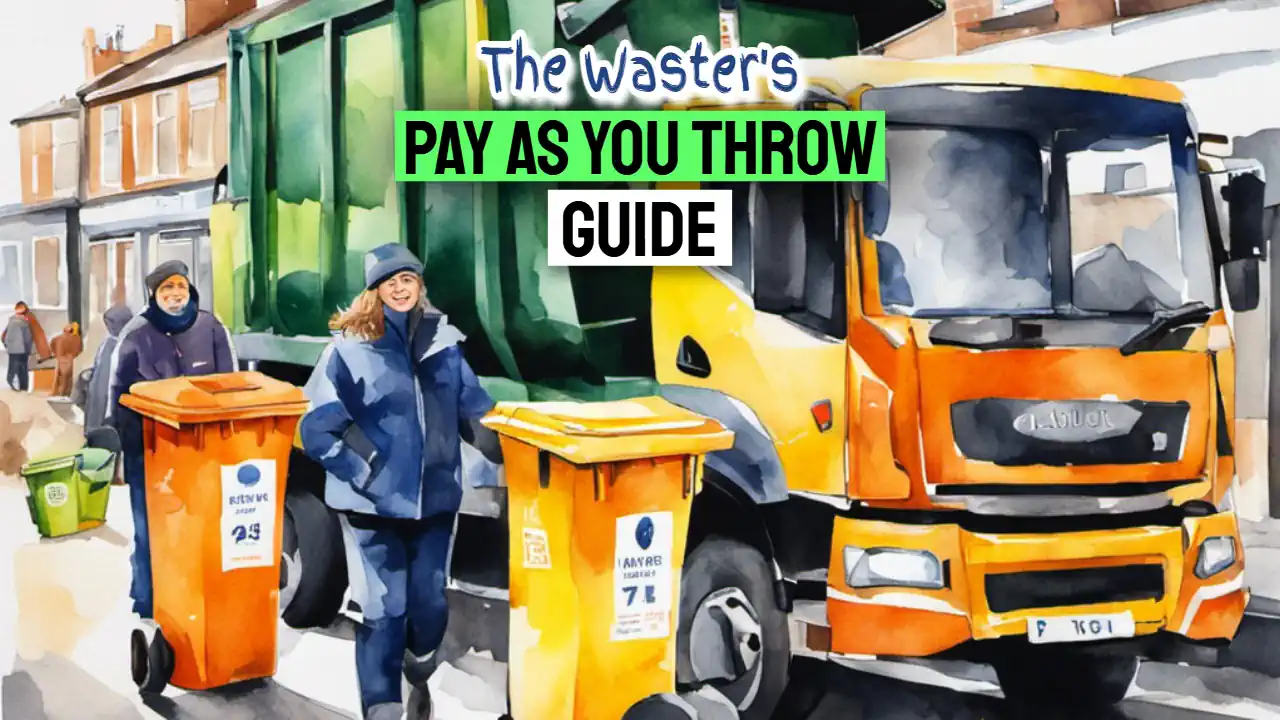
A Brief History of PAYT
- The roots of PAYT are both deep and widespread, with early waste collection implementations seen in various parts of the world.
- Key historical milestones include:
- Early adoption in certain European and North American regions reflects a growing environmental consciousness.
- The gradual evolution of the system, incorporating technological advancements like RFID for better waste tracking and management,
- The incoming Conservative administration in the United Kingdom halted the previous Labour government's efforts to adopt PAYT. That was in 2010, and there has been no further progress since.
As we journey further into the nuances of PAYT systems, our next section will explore the different types and models of PAYT programs. From full-unit to variable-rate pricing, these models represent the versatility and adaptability of PAYT in addressing diverse municipal needs and challenges.
Types and Models of PAYT Programs
In the realm of Pay as You Throw (PAYT) systems, diversity is key. Various models have been developed, each tailored to the unique needs of different municipalities and regions.
This section delves into the three primary types of PAYT programs:
- full-unit pricing,
- partial-unit pricing, and finally the
- variable-rate pricing form of PAYT scheme.
Understanding these models is crucial for grasping how PAYT can be adapted to various contexts.
1. Full-Unit “Pay Throw” Pricing
- How it Works: In the full-unit pricing model, users pay for every unit of garbage they produce. This is typically done by throw communities purchasing tags, custom bags, or selected size containers in advance.
- Key Characteristics:
- Direct User Responsibility: The more waste you generate, the more you pay.
- Encourages Waste Reduction: Users are financially incentivized to produce less waste when the pay waste equation is balanced.
2. Partial-Unit Pricing
- Model Explained: Partial-unit pricing is a hybrid approach. Here, the local authority or municipality sets a limit on the number of bags or containers of garbage included in regular taxation.
- Additional Waste: If a user exceeds the set limit, they can purchase additional capacity.
- Characteristics:
- Combination of Tax-Based and User-Pay Systems: It balances the traditional tax system with user-pay principles.
- Flexibility: Provides people with a middle ground for users and authorities.
3. Variable-Rate Pricing
- User Choice and Flexibility: This model stands out for its adaptability. Users can choose from a range of container sizes, with prices corresponding to the size selected.
- Adaptability to Waste Generation: It suits households with varying waste production patterns.
- Benefits:
- Customizable to User Needs: Ideal for diverse urban and suburban settings.
- Incentivizes Waste Reduction: Larger containers cost more, encouraging less waste generation.

Having explored the various models of PAYT, we now turn our attention to the myriad benefits these systems offer. In the next section, we will delve into the benefits and rationale for PAYT, examining its economic, environmental, and social impacts. Understanding these benefits is key to appreciating the full potential of PAYT systems for revolutionizing waste management.
Benefits and Rationale for PAYT
The implementation of Pay as You Throw (PAYT) systems in waste management around the world has been driven by a variety of compelling benefits and rationales. These extend across economic, environmental, and social domains, providing a holistic improvement to the way we handle waste. This section explores these benefits in depth, shedding light on why PAYT is more than just a waste management strategy—it's a step towards sustainable living.
Economic Benefits
- Cost-Effective Waste Management: PAYT systems transform waste disposal from a fixed expense into a variable one, directly linked to usage. This shift can lead to significant cost savings for both municipalities and residents.
- Comparison with Traditional Utility Billing:
- Like electricity or water, waste disposal under PAYT is metered, promoting more conscious consumption.
- This can lead to a reduction in overall waste management costs as residents become more mindful of their waste production.
Environmental Impact
- Boost in Recycling Rates: One of the most significant environmental impacts of PAYT is the marked increase in recycling. When residents pay per unit of waste, they are incentivized to recycle more, reducing the amount of waste sent to landfills.
- Waste Minimization and Energy Savings:
- PAYT encourages not just recycling but also waste minimization at the source.
- This reduction in waste volume translates to lower energy consumption in waste transport and processing, contributing to broader environmental sustainability goals.
Social Considerations
- Fair Distribution of Costs: PAYT systems ensure that waste management costs are distributed more equitably. This means that individuals or households that generate less waste pay less, making the system fairer for everyone.
- Impact on Lower-Income Families:
- Typically, lower-income households produce less waste, making PAYT economically advantageous for them.
- This can lead to a more balanced and socially equitable waste management system.
With these benefits in mind, it becomes evident that PAYT systems are not only environmentally and economically sound but also socially equitable. However, as with any major policy implementation, PAYT systems are not without their challenges and controversies. In the next section, we will delve into these challenges, exploring issues like illegal dumping and fly-tipping, political resistance, and implementation challenges, and how they are addressed in the context of PAYT.
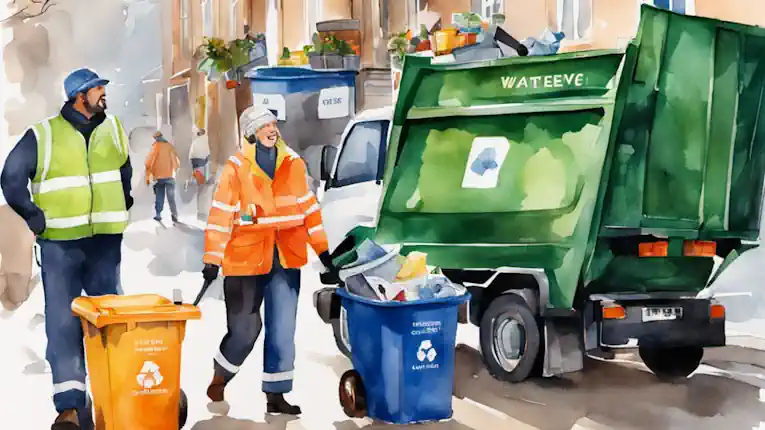
Challenges and Controversies Surrounding PAYT
While pay-as-you-throw (PAYT) systems offer a range of benefits, they are not without their challenges and controversies. This section delves into the primary issues associated with PAYT, including illegal dumping, political resistance, and implementation hurdles. Understanding these challenges is crucial for a comprehensive view of PAYT's impact on waste management.
Illegal Dumping and Fly-Tipping
- Increased Risk: One of the unintended consequences of PAYT can be an increase in illegal waste disposal practices, such as fly-tipping.
- Mitigation Strategies:
- Public Education and Awareness Campaigns: Educating the public on the environmental and legal consequences of illegal dumping (fly-tipping)
- Increased Enforcement and Monitoring: Implementing stricter surveillance and penalties to deter illegal dumping
- Balancing Costs and Compliance: Municipalities need to find a balance between making waste disposal affordable and preventing illegal disposal practices.
Political Resistance and Public Opinion
- Common Objections: Resistance to PAYT often stems from a perceived increase in costs or the hassle of adapting to a new system.
- Addressing Concerns:
- Transparent Communication: Clearly explaining the benefits of PAYT, such as cost savings and environmental advantages
- Community Engagement: Involving residents in the planning and implementation process to increase buy-in and compliance
- Overcoming Resistance: Successful implementation often requires a phased approach, allowing time for adjustment and acceptance.
Implementation Challenges
- Urban vs. Rural Differences: Implementing PAYT in urban areas can differ significantly from rural settings due to varying population densities and infrastructure.
- Customized Approaches:
- Tailoring to Local Needs: Adapting the PAYT model to fit the specific waste management challenges and capacities of different communities
- Technological Integration: Utilizing technology like RFID tags for efficient waste tracking and billing
Despite these difficulties, PAYT systems continue to gain popularity because of their demonstrated advantages in waste reduction and environmental conservation. In the next section, we will explore the global adoption and case studies of PAYT, highlighting how different regions around the world, from North America to Asia, have successfully implemented and adapted these systems to their unique environmental and social landscapes.
Global Adoption and Case Studies of PAYT
The Pay as You Throw (PAYT) model, a revolutionary approach to waste management and a big boost for the circular economy, has seen widespread adoption across the globe.
Each region brings its own unique perspective, adapting the system to local needs and challenges. This section delves into the adoption and impact of PAYT in various parts of the world, showcasing its versatility and effectiveness.
North America
- Pioneering in PAYT: The United States and Canada have been at the forefront, with many communities implementing PAYT as early as the 1970s.
- Statistics and Examples:
- A significant number of communities have adopted PAYT, leading to measurable reductions in waste and increases in recycling rates.
- Cities like San Francisco have been practicing forms of PAYT for decades, showcasing long-term sustainability.
Europe
- Early Adoption: Austria was among the first to implement individual waste charging, setting a precedent as early as 1945.
- Notable Programs:
- Germany, with cities like Dresden, introduced electronic identification and billing systems for waste charges, enhancing efficiency and compliance.
- Spain's early experiences with PAYT have contributed to evolving and refining the system within Europe.
Asia
- Diverse Implementations: Asian countries have adapted PAYT to suit their specific waste management challenges.
- Impact in Cities:
- Taipei's “Per Bag Trash Collection Fee” system significantly reduced waste volume and boosted recycling.
- Japan, Korea, Thailand, and Vietnam have all seen success with PAYT, each tailoring the system to local contexts.
“Pay as You Throw” Waste Charges: Conclusion and Recap
The journey through the world of Pay as You Throw systems has been enlightening, revealing the depth and breadth of this approach to managing municipal waste.
Starting with an overview of PAYT systems and their historical development and basic ideas, and then moving on to different types and models, such as full-unit, partial-unit, and variable-rate pricing, each section has helped the reader get a better grasp of PAYT.
The benefits and rationale section underscored the economic, environmental, and social advantages, making a compelling case for PAYT's effectiveness. Conversely, the section on challenges and controversies provided a balanced view, acknowledging the complexities and hurdles in implementing PAYT systems. Finally, the global adoption section painted a picture of PAYT's versatility and effectiveness across diverse geographical landscapes.
In sum, PAYT emerges not just as a policy or a system but as a philosophy of waste management. It embodies principles of environmental stewardship, economic sensibility, and social equity. As our world grapples with environmental challenges, PAYT stands out as a beacon of sustainable practice, adaptable to the unique needs of communities across the globe.
Coalition Moves to Stop Labour's “Pay as You Throw” Waste Charges
PYT has been all but forgotten in the United Kingdom since 2010 when the new Conservative government threw out the idea as soon as they came into office.
The following is the article on that subject that we first published on 8 June 2010, when the UK's Labour government (1997 to 2010) had recently been ousted. If a new Labour government is elected in 2024 after 13+ years since they were last in office, it will be interesting to see whether Labour returns to PAYT.
Archive Article Starts:
According to the BBC website, the new UK government rules out ‘pay as you throw' waste charges. The Waster wonders whether this means that Labour's recent announcement of a Zero Waste policy will similarly be dropped. Certainly, achieving zero waste will need both the carrot and the stick to achieve, and this seems to go against the zero waste culture.
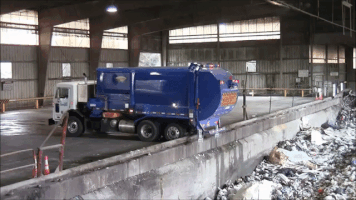 Communities Secretary Eric Pickles has ruled out “pay as you throw” fees for household waste.
Communities Secretary Eric Pickles has ruled out “pay as you throw” fees for household waste.
Labour had created plans to allow English councils to test out programs that would charge or reward people based on the amount of waste they threw away.
But councils shunned the trials, aimed at cutting landfills, and Mr. Pickles said the government was backing rewarding people for recycling instead.
Labour said it should be up to councils to choose how to collect waste.
To meet EU targets the UK must reduce the amount of waste sent to landfills by nearly two-thirds by 2020. Hence, the idea of a ‘Bin tax'.

Labour had proposed giving households that recycled the most rubbish and left the least in their bin a rebate while charging those who put out the most non-recycled rubbish.
Powers to allow five councils in England to trial the scheme from April 2009 were included in the Climate Change Act, but none applied, saying they had not been told how it would operate.
Critics said the “bin tax” idea could encourage fly-tipping and prompt people to burn rubbish at home.
You should treat people with respect instead of having a bunch of bin inspectors
Eric Pickles – Communities Secretary
Mr. Pickles has effectively ruled out a charging scheme, instead backing a recycling reward scheme pioneered by Windsor and Maidenhead council in Berkshire.
Households in the borough, which Mr. Pickles visited on Monday to draw attention to the scheme, are being awarded points for the amount they recycle, which can be redeemed at shops, restaurants, and leisure centres, or donated to schools.
Mr. Pickles said the scheme had increased recycling by 35% and that an incentive-based approach was more effective than taxes or fines in reducing the amount of rubbish sent to landfill sites.
“You should treat people with respect instead of having a bunch of bin inspectors and bin police,”
Mr. Pickles told BBC Radio 4's The World at One.
Incentivizing people was the quickest way to increase recycling levels, which he said would be badly needed if the UK was to meet its target of becoming “one of the green economies of Europe”.
“It does not put the costs up,” he added. “Actually, what it does is increase the recycling rate and puts money into the local economy.”
Windsor and Maidenhead Council is inviting more than 60,000 households to join its RecycleBank service starting Monday.
Councillor Liam Maxwell said about “Pay as You Throw”:
“Paying the public to recycle works. It increases recycling rates, reduces our environmental impact, reduces council tax, and helps local businesses.”
More at BBC News.
–Archive Article Ends–


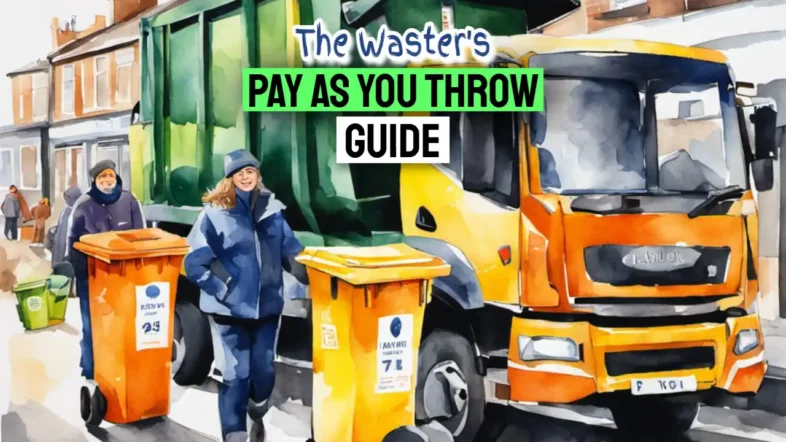
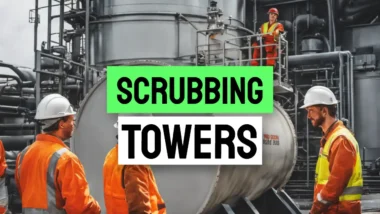
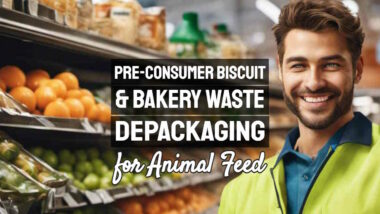



Just wish to say your article is as surprising. Because it’s driving me mad, the whole country’s talking about ways to stop this fly-tipping mess, with all their talks of public awareness and stricter laws, but here I am, still finding rubbish dumped on my land. It’s high time these strategies actually made a dent, because us farmers are sick of cleaning up after dumpers.